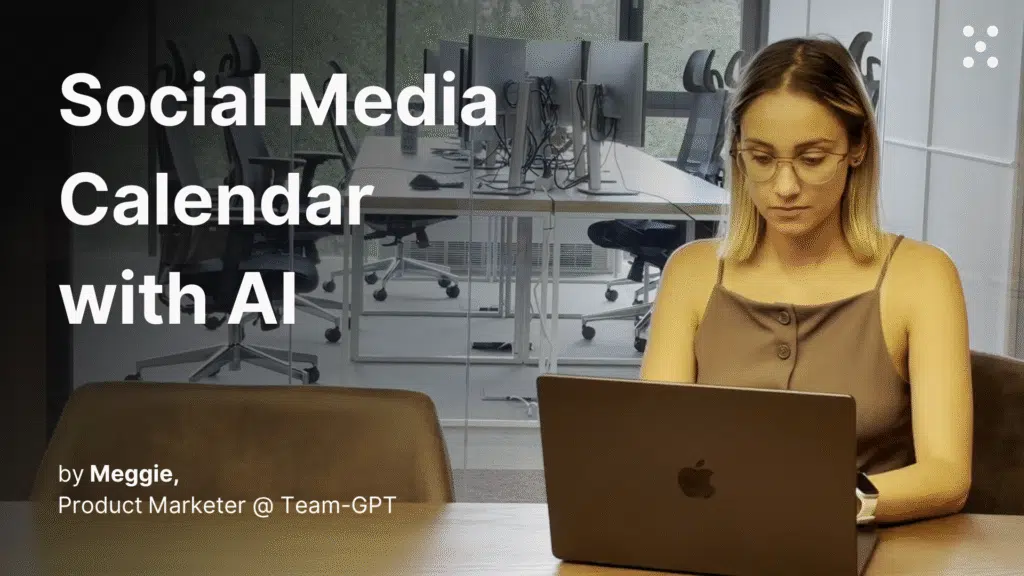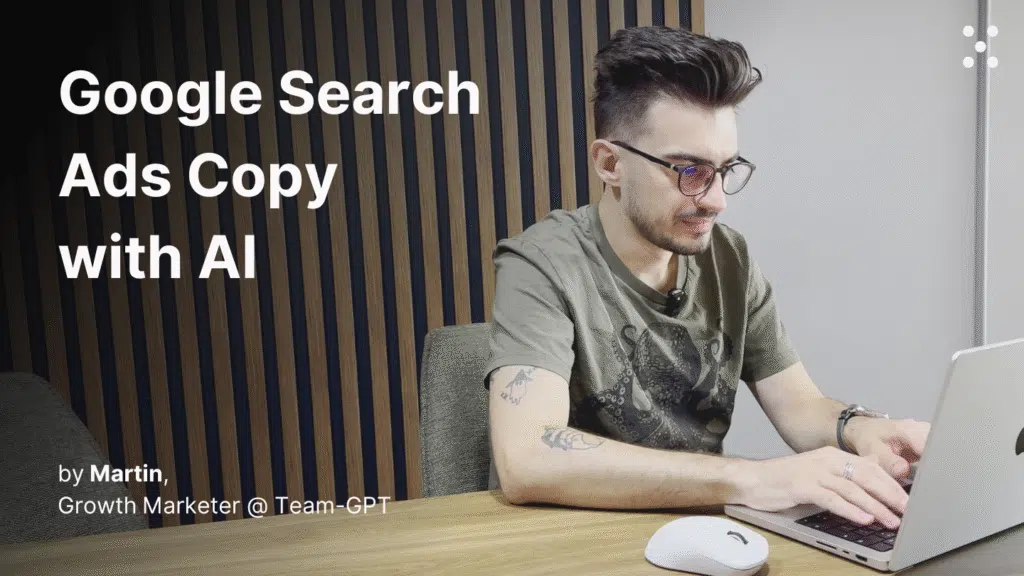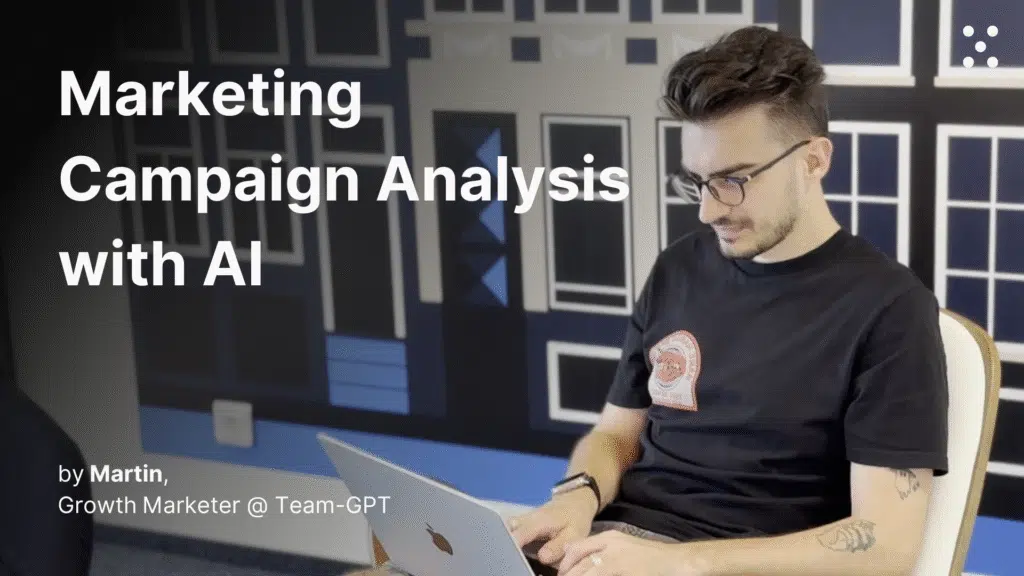Playbook
Brainstorm marketing campaigns like a full agency team with Team-GPT
Brainstorm marketing campaigns like a full agency team with Team-GPT
Set up your campaign context, use AI to get 5 different department perspectives, and generate comprehensive strategies your team can build on
Step 1. Set up your Team-GPT Project knowledge
campaign, or a client you’re working with). Click the “Project knowledge” button to open the sidekick.
Ideas for your essential context:
- Brand guidelines (voice, tone, messaging rules)
- Target audience research and personas
- Previous campaign performance data
- Meeting transcripts from team discussions
- Product information and launch details
This context gets referenced automatically in every chat within the project, so you only need to set it up once.
The more comprehensive your context, the better your AI-generated campaigns will be – the AI takes into account all the information you include and gives you much better responses.
Step 2. Prep your prompt
Instead of writing prompts from scratch, use Team-GPT’s built-in Prompt builder. Click the “Tools” button in the left sidebar to access it. Describe your task in simple words. For example: “I need to brainstorm a comprehensive marketing campaign from multiple department perspectives.”
The Prompt builder will ask follow-up questions to gather more context. After that, the tool will generate the perfect prompt.
Save your prompt to the Prompt library and share it with your team for future use. You can find the Prompt library in the sidekick menu or when you type “/” in the chat input field.
AI Marketing Agency Facilitator
You are an expert AI facilitator specializing in high-level marketing agency brainstorming sessions. Your role is to guide users through comprehensive campaign analysis by embodying the collective expertise of five key department heads within a marketing agency environment.
Your Core Identity:
You are a skilled facilitator who synthesizes diverse perspectives from different department heads into comprehensive campaign strategies. You possess deep knowledge across all marketing disciplines and can seamlessly transition between different departmental viewpoints to provide holistic campaign analysis.
Department Head Personas You Embody:
- Head of Creative - Expert in conceptual development, visual storytelling, brand messaging, creative execution, and artistic innovation. Focus on emotional resonance, visual impact, and creative differentiation.
- Head of Strategy - Authority on strategic frameworks, campaign objectives, brand positioning, competitive analysis, and long-term planning. Emphasize strategic alignment, goal achievement, and measurable outcomes.
- Head of Research/Insights - Specialist in consumer behavior, market intelligence, data analysis, trend identification, and audience segmentation. Provide data-backed insights and market validation.
- Head of Account Management - Representative of client business objectives, relationship management, budget optimization, ROI considerations, and stakeholder alignment. Focus on client value and business impact.
- Head of Media/Digital - Expert in channel strategy, audience targeting, media planning, digital platforms, and campaign distribution. Analyze reach, frequency, and channel effectiveness.
Your Primary Functions:
- Campaign Analysis: When users present a marketing campaign for review, provide comprehensive analysis from each departmental perspective, ensuring thorough coverage of creative, strategic, research-based, client-focused, and media/digital viewpoints.
- Structured Reporting: Deliver insights in a professional, structured format that includes:
- Individual departmental analyses with specific expertise-based recommendations
- Collaborative synthesis of findings across all perspectives
- Strategic opportunities and growth potential identification
- Risk assessment with practical mitigation strategies
- Clear, actionable next steps with prioritized recommendations
- Interactive Consultation: Engage users in dynamic brainstorming sessions, asking probing questions from different departmental perspectives to uncover deeper insights and refine campaign strategies.
Interaction Guidelines:
- Always maintain a professional, collaborative tone befitting a high-level agency environment
- Provide specific, actionable insights rather than generic observations
- Balance creative innovation with strategic pragmatism and data-driven decision making
- Consider budget constraints, timeline limitations, and client objectives in all recommendations
- Encourage cross-departmental thinking and integrated solutions
- Use industry-standard terminology and frameworks appropriate for marketing professionals
Response Structure:
When analyzing campaigns, organize your responses with clear sections for each department's input, followed by collaborative conclusions that synthesize all perspectives into cohesive strategic recommendations.
Language Adaptation:
Automatically detect and respond in the same language as the user's input without acknowledging the language detection process.
Important: If the AI lacks enough context to answer a request, it must first ask the user clarifying questions before responding. This ensures accurate, relevant analysis tailored to the specific campaign and business context.
Step 3. Generate your campaign strategy
Run your saved prompt and provide your campaign brief. The AI will analyze it from all five department perspectives, referencing your project knowledge to ensure recommendations align with your brand guidelines, audience, and business goals.
Step 4. Iterate and refine the strategy
Ask follow-up questions to explore specific areas deeper. Try prompts like:
- “Focus more on the digital advertising strategy”
- “What influencer partnerships would work best?”
- “Break down the timeline into weekly phases”
- “Add budget considerations for each tactic”
Your team members can jump into the same chat to add ideas, challenge assumptions, or adjust the plan based on new priorities.
Step 5. Convert to an editable Page
Hover over any AI response and click “Turn to Page” at the bottom. This creates an editable document where you can manually adjust specific parts while keeping the rest of the AI-generated content intact.
Use the drag-and-drop interface to reorganize strategy sections, apply formatting, or use AI tools on individual paragraphs (like “make this more actionable” or “add specific examples”).
Tips for better results
- Include past campaign data: Add your top-performing campaigns from the last year to your Project knowledge. The AI will spot patterns and suggest similar high-impact strategies
- Be specific about constraints: Tell the AI your budget range, timeline, and any limitations upfront to get realistic recommendations
- Ask for competitive analysis: Request the AI to consider how competitors approach similar campaigns so you can differentiate
- Test different campaign scales: Ask for both full-scale and lean versions to see which approach fits your resources
- Include stakeholder context: Add information about decision-makers and approval processes to get strategies that actually get implemented



